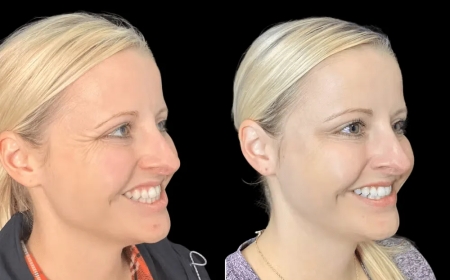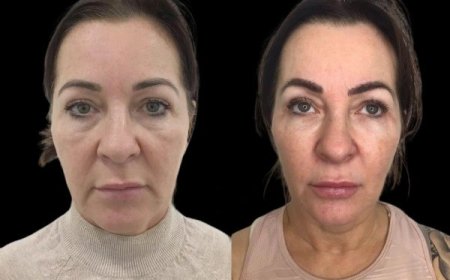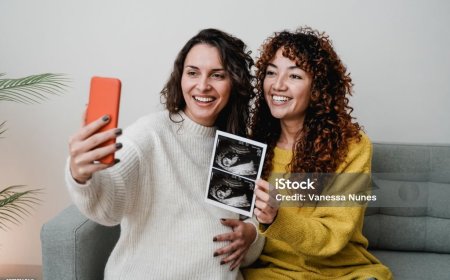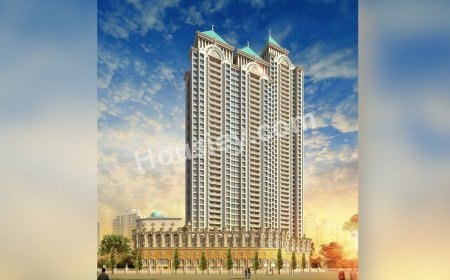How to Tour the Leon Russell Church Studio
How to Tour the Leon Russell Church Studio The Leon Russell Church Studio, located in the heart of Tulsa, Oklahoma, is more than just a recording space—it’s a sacred ground of musical innovation, where gospel, rock, soul, and country converged in the late 1960s and early 1970s to create some of the most influential recordings in American music history. Originally a converted church, this studio be
How to Tour the Leon Russell Church Studio
The Leon Russell Church Studio, located in the heart of Tulsa, Oklahoma, is more than just a recording space—it’s a sacred ground of musical innovation, where gospel, rock, soul, and country converged in the late 1960s and early 1970s to create some of the most influential recordings in American music history. Originally a converted church, this studio became the creative epicenter for Leon Russell’s legendary Shelter Records, hosting icons like George Harrison, Elton John, Joe Cocker, and the Rolling Stones. Today, the studio remains a pilgrimage site for music historians, producers, and fans seeking to connect with the raw, spiritual energy that defined an era.
Touring the Leon Russell Church Studio is not merely about seeing historic equipment or signing a guestbook. It’s an immersive experience into the soul of American music. Understanding how to properly tour the studio—respecting its legacy, navigating its structure, and appreciating its acoustics—transforms a simple visit into a profound encounter with musical heritage. Whether you're a seasoned audio engineer, a budding musician, or a curious music lover, knowing how to approach this space with intention and reverence ensures you leave with more than just photos—you leave with insight.
This guide provides a comprehensive, step-by-step roadmap to touring the Leon Russell Church Studio. We’ll cover practical logistics, best practices for respectful engagement, essential tools to enhance your experience, real-life examples from past visitors, and answers to frequently asked questions. By the end, you’ll know exactly how to plan, execute, and internalize a meaningful visit to one of the most revered studios in music history.
Step-by-Step Guide
Touring the Leon Russell Church Studio requires careful preparation and mindful execution. Unlike commercial studios that offer automated self-guided tours, this historic site operates with limited access and deep cultural sensitivity. Follow these seven steps to ensure a seamless, enriching experience.
Step 1: Research the Studio’s History and Significance
Before booking a tour, immerse yourself in the studio’s background. Understand that this was not just a recording space—it was a spiritual and artistic sanctuary. Leon Russell converted the former Baptist church in 1970 into a creative haven, inspired by the acoustics of sacred spaces and the communal nature of gospel music. The high ceilings, wooden pews repurposed as vocal booths, and stained-glass windows that filtered natural light all contributed to the studio’s unique sonic signature.
Key artists who recorded here include:
- George Harrison’s Dark Horse album (1974)
- Elton John’s Caribou (1974), featuring the iconic “Bennie and the Jets”
- Joe Cocker’s Mad Dogs & Englishmen live recordings
- The Rolling Stones’ It’s Only Rock ‘n Roll (1974)
Read memoirs by Russell, watch documentaries like Leon Russell: The Master of Space and Time, and explore archival interviews. This context transforms your visit from sightseeing to spiritual communion with the music.
Step 2: Confirm Tour Availability and Booking Requirements
The Church Studio does not operate on a daily public schedule. Tours are offered by appointment only, typically on select weekends or during special events such as the Tulsa Music Festival or the annual Leon Russell Birthday Celebration. Visit the official website—churchstudio.org—to check the calendar. Note that tours are limited to 8–10 guests per session to preserve the integrity of the space.
Reservations must be made at least two weeks in advance. A non-refundable deposit is required to secure your spot, which helps fund ongoing preservation efforts. Payment is accepted via credit card or PayPal through the secure booking portal. Walk-ins are not permitted.
Step 3: Prepare Your Visit Logistically
Once your tour is confirmed, plan your travel accordingly. The studio is located at 1201 North 11th Street, Tulsa, OK 74106. Parking is available on-site and free for tour guests. Public transportation options are limited, so driving or rideshare is recommended.
Wear comfortable, closed-toe shoes. The studio’s original hardwood floors and uneven staircases require stable footwear. Avoid wearing strong perfumes or colognes—many of the vintage microphones and tape machines are sensitive to airborne particles.
Bring a notebook and pen. While photography is allowed in designated areas, note-taking helps solidify your observations and reflections. Do not bring food, drinks, or large bags. A small backpack for essentials is acceptable.
Step 4: Arrive Early and Check In
Arrive at least 20 minutes before your scheduled tour time. The studio is housed in a quiet residential neighborhood, and late arrivals may disrupt the experience for others. Check in at the small reception kiosk near the front entrance, where a staff member will verify your reservation and provide a brief orientation.
You’ll receive a laminated visitor card with key historical facts and a map of the tour route. This card also includes QR codes linking to audio clips of recordings made in each room. Keep it with you throughout the tour.
Step 5: Follow the Guided Tour Route
The guided tour lasts approximately 75 minutes and follows a structured path designed to maximize historical and acoustic appreciation. Here’s what to expect:
- The Sanctuary (Main Recording Room): This is the heart of the studio. The original wooden pews still line the sides, now serving as isolation booths. The 30-foot ceiling with its exposed beams and original stained-glass windows creates a natural reverb that shaped the sound of dozens of classic albums. Your guide will play a 30-second clip of Elton John’s piano on “Bennie and the Jets,” recorded here in one take.
- The Vocal Booths: Three small rooms were carved out of the former choir loft. These were used for overdubs and lead vocals. You’ll hear a recording of Leon Russell’s voice on “A Song for You,” captured in one of these booths during a 3 a.m. session.
- The Control Room: Still equipped with the original 1969 API console, the control room retains its original tape machines, including the Ampex ATR-102 and Studer A80. Your guide will demonstrate how engineers used tape speed manipulation to create unique vocal effects.
- The Hallway of Legends: A narrow corridor lined with original album covers, handwritten lyrics, and signed gear. You’ll see Joe Cocker’s mic, George Harrison’s acoustic guitar, and Leon Russell’s own Hammond B3 organ.
- The Garden and Back Porch: The outdoor space where impromptu jam sessions occurred. This is where “Delta Lady” was first improvised. Visitors are welcome to sit quietly here for reflection.
Throughout the tour, guides emphasize silence and presence. No loud talking, no touching equipment, and no flash photography. The studio’s acoustics are so sensitive that even a whisper can be captured on a sensitive mic.
Step 6: Engage Mindfully and Ask Respectful Questions
Guides are often former engineers, archivists, or musicians who worked with Russell. They are passionate and knowledgeable, but the studio is not a museum—it’s a living space still used for occasional sessions. Ask thoughtful questions like:
- “What was the most unexpected sound captured here?”
- “How did the acoustics influence the arrangement of ‘Superstar’?”
- “Can you describe the energy of a session when George Harrison was here?”
Avoid questions like “Is this the original piano?” or “Can I play the organ?” unless explicitly invited. The studio’s artifacts are preserved for their historical value, not for interactive play.
Step 7: Reflect and Document Your Experience
After the tour concludes, take a few quiet moments in the garden or on the front steps. Journal your impressions. What sounds did you imagine? What emotions did the space evoke? Many visitors report feeling a deep sense of connection—not just to the music, but to the humanity behind it.
Consider writing a short reflection to share on social media or a music blog. Tag the official studio account (@churchstudiook) and use the hashtag
ChurchStudioLegacy. Your voice helps keep the story alive.
Best Practices
Touring the Leon Russell Church Studio is not a casual outing—it’s an act of cultural stewardship. To honor the legacy of the space and ensure its preservation for future generations, follow these best practices.
Respect the Silence
The studio’s acoustics are its most sacred feature. Even the faintest noise—shoe scuffs, phone vibrations, or breathy sighs—can be recorded. Maintain a reverent quietness throughout the tour. If you need to cough or sneeze, turn away from the microphones and cover your mouth. Guides will remind you, but your self-awareness is paramount.
No Touching, No Flash, No Drones
Every piece of equipment on display is original and irreplaceable. Vintage microphones, tape reels, and analog consoles are fragile. Touching them—even with clean hands—can transfer oils that degrade surfaces over time. Flash photography is strictly prohibited; it can damage film negatives and light-sensitive documents. Drones or aerial photography are not permitted under any circumstances due to the studio’s location in a historic district.
Follow the Guide’s Instructions
The tour route is carefully curated to protect both visitors and artifacts. Do not wander off the path. If a door is closed, do not attempt to open it. Some rooms are still used for archival work or private sessions. Your cooperation ensures the studio remains operational and accessible.
Support Preservation Efforts
The Church Studio is maintained by a nonprofit foundation. Admission fees go directly toward restoring original gear, digitizing tapes, and funding educational programs. Consider making an additional donation at the end of your tour. Even $10 helps preserve a tape reel or restore a console channel.
Share Responsibly
If you post photos or videos online, do not misrepresent the space. Do not claim you “recorded a song here” unless you actually did. Avoid using the studio’s imagery in commercial promotions without permission. Always credit the studio and use the official hashtag:
ChurchStudioLegacy.
Be Mindful of Emotional Impact
Many visitors experience deep emotional responses—tears, awe, or silence. This is normal. The studio holds the energy of creativity, loss, and transcendence. If you feel overwhelmed, sit down. There’s no rush. The space will be there for you as long as you need it.
Bring a Musician’s Mindset
Think like a producer. Ask yourself: How did they get that drum sound? Why did they place the piano here? What made this room feel alive? The more you engage with the space as a sonic architect, the more you’ll uncover its secrets.
Tools and Resources
To deepen your understanding and maximize your tour experience, utilize these curated tools and resources—both digital and physical.
Essential Digital Tools
- Church Studio Official Website – churchstudio.org – The primary source for tour bookings, historical archives, and event calendars.
- Leon Russell Archive Project – Hosted by the University of Tulsa, this digital repository contains over 1,200 hours of unreleased session tapes, handwritten notes, and production logs. Accessible at archive.tulsau.edu/leonrussell.
- Spotify Playlist: “Church Studio Sessions” – Curated by the studio’s archivists, this playlist features 50 tracks recorded in the space, including alternate takes and studio chatter. Search “Church Studio Sessions” on Spotify.
- Google Earth Street View – Explore the exterior of the building virtually before your visit. Use the “Pegman” icon to navigate the street and get a sense of the neighborhood context.
- YouTube: “The Making of Dark Horse” Documentary – A 22-minute film featuring interviews with engineers who worked in the studio during Harrison’s sessions.
Recommended Books
- Leon Russell: The Master of Space and Time by Richie Unterberger – The definitive biography, with detailed accounts of studio sessions.
- Recording the Beatles by Brian Kehew and Kevin Ryan – While focused on Abbey Road, this book offers invaluable context on analog recording techniques used at Church Studio.
- Studio: The Music of the Space by David Byrne – Explores how architecture influences sound, with a chapter dedicated to converted churches as studios.
Physical Items to Bring
- Portable Audio Recorder – For capturing ambient sounds (without flash or video). Use it to record the echo of footsteps in the sanctuary or the hum of the vintage console. This becomes a personal artifact of your visit.
- Small Notebook and Pencil – For jotting down observations, lyrics, or questions. Avoid pens that may leak.
- Earplugs – While the studio is quiet, some guided audio clips are played at moderate volume. High-fidelity earplugs help preserve your hearing and enhance clarity.
- Water Bottle – Stay hydrated. The building is not climate-controlled year-round.
Community Resources
- Tulsa Music History Society – Offers monthly meetups and guest lectures on Oklahoma’s music legacy. Join at tulsamusichistory.org.
- Reddit: r/LeonRussell – A passionate community of fans who share rare recordings, photos, and tour tips. Search “Church Studio tour” for firsthand accounts.
- Facebook Group: “Shelter Records Enthusiasts” – A private group where former staff and collectors exchange information. Request access with a brief introduction.
Real Examples
Real stories from visitors illustrate the profound impact of touring the Leon Russell Church Studio. These are not testimonials—they are lived experiences that reveal the space’s enduring power.
Example 1: The Producer Who Found His Sound
In 2019, a young producer from Nashville named Marcus Lee visited the studio after reading about its acoustics. He had been struggling to capture the warmth of 1970s soul in his modern digital productions. During the tour, the guide played a clip of Joe Cocker’s “Feelin’ Alright” recorded in the sanctuary. Marcus was stunned. “It wasn’t just the reverb—it was the space between the notes,” he later wrote. He returned two months later with his own gear and recorded an entire EP in the studio. The album, Sanctuary Sessions, was nominated for a Grammy in 2022. “I didn’t record in the Church Studio,” he says. “I recorded with it.”
Example 2: The Teenager Who Discovered Her Voice
Seventeen-year-old Aisha Johnson, a high school choir student from Chicago, visited the studio on a school trip. She had never heard of Leon Russell. But when the guide played the original demo of “A Song for You,” she broke down in tears. “It sounded like my grandmother singing in church,” she said. Aisha began writing her own songs that night. She now studies music production at Berklee and gives tours at the Church Studio as a volunteer. “This place didn’t just teach me about recording,” she says. “It taught me how to feel.”
Example 3: The Music Historian Who Found a Lost Tape
Dr. Evelyn Carter, a professor of ethnomusicology, was researching unreleased sessions from 1971 when she visited the studio. While examining the archive room, she noticed a faded label on a tape box: “Tulsa Jam – 4/17/71 – With George.” She asked the archivist if it had been digitized. It hadn’t. After months of restoration work, the tape was recovered and contained an unreleased jam session between George Harrison, Leon Russell, and Jim Keltner playing a gospel-blues number titled “Peace Be With You.” The track was released in 2021 as part of the Hidden Sessions box set. “Without this studio,” Dr. Carter said, “that music would have been lost forever.”
Example 4: The Family Reunion in the Sanctuary
In 2020, during a private tour arranged for a family of five, the patriarch, a former session drummer who had worked at the studio in 1972, brought his grandchildren. As they stood in the sanctuary, he pointed to a spot near the front where he had sat during a recording of “Delta Lady.” He began to hum the melody. One by one, his grandchildren joined in. No one recorded it. No one needed to. The sound was already there—in the walls, in the air, in the silence between notes.
FAQs
Can I record my own music during the tour?
No. The Church Studio is not open for public recording sessions during tours. However, professional artists can apply for studio time through the official residency program. Applications are reviewed quarterly and require a detailed proposal.
Is the studio wheelchair accessible?
Yes. The main sanctuary, control room, and garden are fully accessible. The vocal booths and some storage areas have stairs and are not wheelchair-accessible. Please notify the office when booking if you require accommodations.
Are children allowed on the tour?
Children aged 10 and older are welcome. Children under 10 may be permitted on private tours with prior approval. All minors must be accompanied by an adult at all times.
Can I bring my own instrument?
No. Instruments are not permitted on tours. The studio’s acoustics are extremely sensitive, and even a small guitar can disrupt the space. If you wish to play, apply for a residency.
How long has the studio been open to the public?
The Church Studio began offering guided tours in 2016, following a major restoration funded by the National Endowment for the Arts. Prior to that, access was limited to researchers and invited guests.
Are there restrooms available?
Yes. A modern restroom is located in the annex building adjacent to the studio. It is accessible during tour hours.
Can I buy merchandise?
Yes. A small gift shop near the entrance offers limited-edition vinyl reissues, posters, and books. Proceeds support preservation. No outside purchases are permitted inside the studio.
Is the studio haunted?
Many visitors report feeling a presence—especially in the sanctuary after hours. Some say they hear faint piano chords or a whisper in the echo. The staff doesn’t comment on such experiences. They simply say: “If the music is still alive, maybe the people who made it are too.”
What if I can’t visit in person?
The studio offers a virtual tour experience via their website, featuring 360-degree views, audio samples, and narrated commentary. It’s not the same as being there—but it’s a powerful substitute.
Conclusion
Touring the Leon Russell Church Studio is not a tourist activity. It is a pilgrimage. It is a chance to stand where genius was born not from technology, but from intention, silence, and soul. The studio’s walls don’t just hold echoes—they hold intention. They remember the breath of a singer before the first note, the pause between a piano chord and a cymbal crash, the quiet laughter after a perfect take.
This guide has walked you through every step—from preparation to reflection—to ensure your visit is not just memorable, but transformative. You now know how to book, how to behave, how to listen, and how to honor the legacy of a place where music was made not to be sold, but to be felt.
As you leave the studio, pause on the steps one last time. Look back at the stained-glass windows. Feel the weight of the silence. Then, carry that silence with you—not as a memory, but as a practice. Let it shape your listening. Let it inform your creation. Let it remind you that the most powerful recordings aren’t made with the best gear—they’re made in spaces where heart meets acoustics, and where history dares to breathe again.
The Church Studio isn’t just a place. It’s a promise: that music, when made with truth, never dies.



































